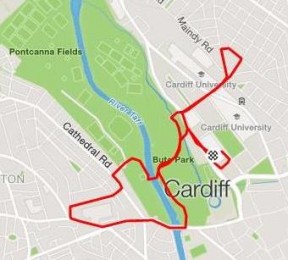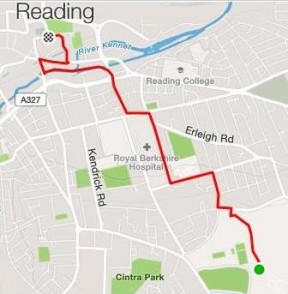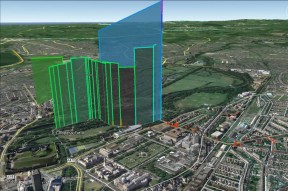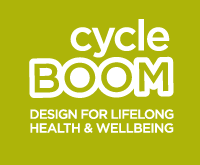“The January Blog is a little later than planned because the team has been fully occupied with data analysis – including data visualisation as Carl Mann (University of Cardiff) explains here.”
Throughout 2015, the cycle BOOM project collected a second wave of data from the local residents of Cardiff and Reading. We are interested in the way participants respond emotionally to the built environment. To achieve this, we filmed participants while they rode around a way-marked route around the city, taking in many different environments (see Figures 1 and 2 below for an example of the routes).
Figure 1: The Cardiff Waymarked Route Figure 2: The Reading Waymarked Route
In addition to filming, we attached a galvanic skin response (GSR) sensor to the participant’s wrist. This technology has been predominantly used in the laboratory and while walking (Nold, 2009). The cycle BOOM project extends this method to cycling. From this we can investigate whether a person is relaxed or in a state of anxiety as they ride through different environments and across different types of infrastructure. We then interview the participants while playing back the video of their ride to try to understand how and why interactions in the built environment are associated with positive or negative physiological response. By linking a participant’s utterances in interviews with GSR sensor readings we hope to demonstrate how a map visualising emotional ‘hotspots’ across this city can be useful in targeting interventions to either promote or reduce certain external stimuli – see Figure 3.
Figure 3: Visualising Emotions
During the first quarter of 2016, we are busy continuing to analyse data and will soon be in a position to generate visualisations for our selected waymarked routes in Cardiff and Reading. Our ultimate aim is to inform decision makers (e.g. highway engineers) on the types of environment and infrastructure that could support and promote older cycling, in an effort to create more age friendly cities.
Carl Mann is a Research Assistant on the cycle BOOM research project at Cardiff University. Contact him at mannc2@cardiff.ac.uk




Leave a Reply